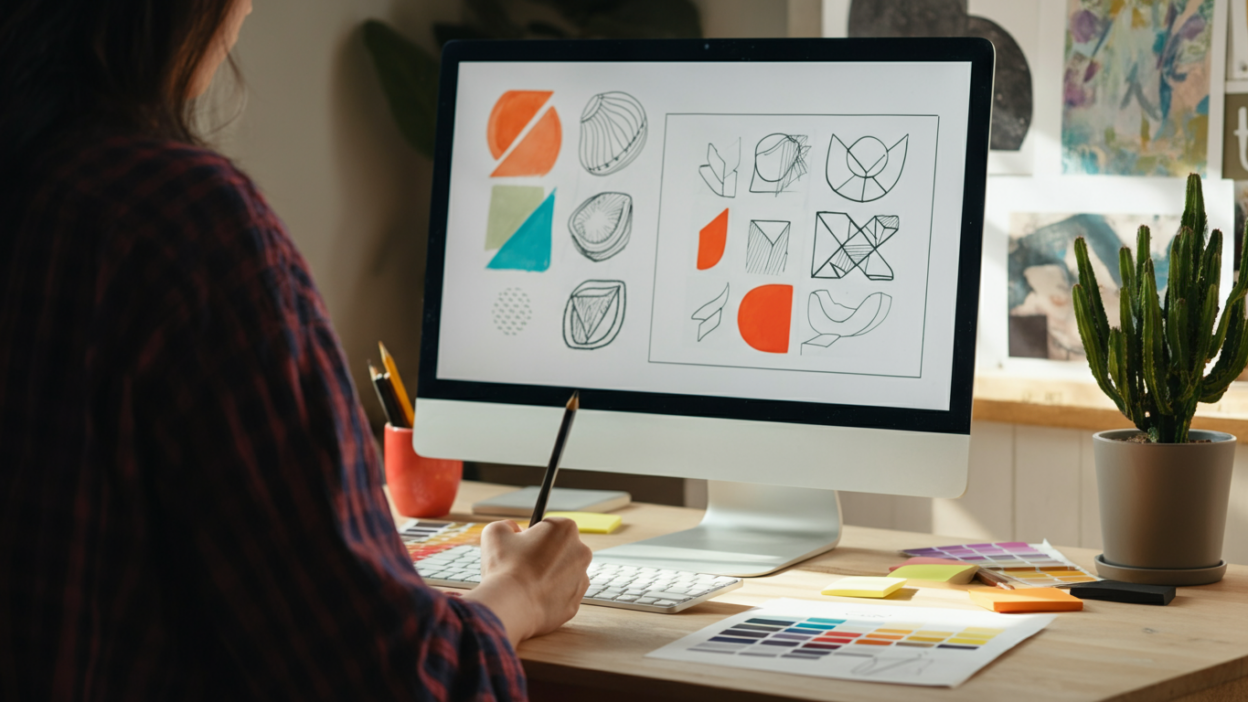In today’s digital age, the concept of remote creative teams has transitioned from a novelty to a norm. Whether you’re collaborating with freelancers across time zones, managing a hybrid team, or running an entirely remote agency, one thing is clear: creative work hasn’t stopped – it’s just moved online. And to keep that rhythm smooth, the right creative tools are essential. They’re not just nice-to-haves; they’re the glue holding your remote creative flow together.
But while Slack channels and Zoom calls keep us connected, are they really enough to keep creative flow alive?
Let’s dig into what makes remote creative teams thrive (and where it often breaks down), why traditional collaboration tools fall short, and what we’ve learned at ButtonShift about working with freelancers, creative producers, and designers across the globe.
The Reality of Working With Remote Creative Talent
At ButtonShift, we’ve worked with a wide range of creatives – many of them freelancers or remote contributors. And we quickly realized something: it’s not only the people or the work ethic that causes friction. It’s also the tools and processes.
Here’s what started happening:
- Feedback flew in from everywhere.
One minute we were digging through an email thread, the next we were scrolling back in chats, then suddenly someone dropped a random comment in a Google Sheet we didn’t even know existed. It felt like playing hide-and-seek with feedback. - Approvals became a waiting game.
We’d ping someone and then follow up with an email. Maybe even drop a reminder in a shared doc. Chasing sign-offs across platforms slowed everything to a crawl. - We lost clarity fast.
Without one place to track it all, the lines blurred. What was approved? What was still pending? Did the client actually see that last version? Briefs got misread, priorities got mixed up, and updates got missed. The problem wasn’t just communication – it was the scattered creative tools we were using.
In short: We had the talent. We just didn’t have the structure.
What Doesn’t Work for Remote Creative Teams
Let’s start by addressing a few things that we observed would help but didn’t:
Generic project management tools: Sure, you can use Asana or Trello to assign tasks. But what about version tracking? Inline comments on videos? Or visual annotations on a social carousel? These tools weren’t built with creative teams in mind.
Feedback in meetings only: Yes, real-time feedback is great. But relying only on live reviews can delay progress, especially across time zones. Creative teams need async-friendly ways to give and receive input. Here are some visual feedback tools that will simplify your feedback game.
Disconnected apps: When you’re hopping between Google Drive, WhatsApp, Zoom, and Figma just to get one video approved, it creates more confusion than clarity.
The lack of clear communication tools and workflows is one of the biggest challenges remote teams face. And it’s even more intense in creative workflows that thrive on speed and clarity. Perhaps, you can learn more about how to manage remote creative teams.

Why Other Tools Don’t Cut It?
Sure, you could glue together Slack, Zoom, and Google Drive. But that leaves gaps:
- Slack/Teams are great chat apps, but you still need external plugins to tag visuals .
- Trello/Asana can track tasks, but lack inline commenting on design files .
- Zoom/Google Meet are essential for calls, but not designed for async feedback or annotated visual markups.
- Dedicated visual‑feedback tools (like Filestage or Ziflow) are strong in that lane – but they don’t handle project management or team chat in the same system
So teams end up juggling multiple creative tools – none of which talk to each other, leaving inefficiencies, confusion, or worse, missed deadlines.
What Actually Works (and Why It Matters)
If there’s one thing we’ve learned working with remote creative teams, it’s this: great collaboration isn’t just about piling on more tools. It’s about making the creative process feel clear, connected, and human.
Here’s what’s been a game-changer for us and for tons of teams using ButtonShift:
Everything in one place. Finally.
No more digging through old emails, hunting down Slack messages, or trying to remember which Google Drive folder the feedback was in. When your briefs, files, feedback, and comments live on one platform, it just clicks. Everyone’s on the same page, and the chaos? Gone.
Feedback that speaks your visual language.
Ever tried explaining a layout tweak over email? Ugh, it’s frustrating! But with visual-first feedback, you can just pin a note on an image or drop a voice comment right on a video, exactly where the change is needed. It’s faster, clearer, and way less frustrating.
No more “Is this the final-final?”
Version chaos is real. With smart version control, you’ll always know what’s current, what’s approved, and what’s ready to go. No more second-guessing.
Here’s how ButtonShift helps avoid creative overlaps and helps managing versions.
How ButtonShift Makes Remote Creative Work… Work
At ButtonShift, we get it – creative flow shouldn’t be slowed down by clunky processes. That’s why we built a tool that bridges the gap between imagination and execution. Every feature comes from real-world pain points we’ve faced ourselves, designed to feel second nature for creatives and managers. Unlike one-size-fits-all software, our creative tools are purpose-built to support feedback loops, version control, and collaboration that actually enhances your team’s momentum, not hinders it.
Here’s how ButtonShift steps up:
Everything in One Place: Spaces for each client, Boards for each project, so your structure mirrors how your team actually works.
Integrated Feedback: Drop comments directly on images, or videos. No more email ping-pong.
Smooth Version Management: Upload new versions without losing sight of the old ones. Everyone sees the evolution of the creative, not just the end result.
Track Progress in Real-Time: ButtonShift shows where a file is in the workflow- whether it’s being reviewed, needs edits, or is approved.
Designed for creatives (not just managers): Unlike generic tools, we don’t make you force-fit your process into a rigid template. ButtonShift bends to your creative rhythm.
The Future of Remote Creative Teams? Flexible, Visual, and Clear.
Remote creative collaboration isn’t just a trend- it’s the new normal. But to truly make it work, creative teams need tools that understand their flow, not fight against it.
At ButtonShift, we believe the future lies in platforms that simplify feedback, centralize communication, and speed up approvals without killing the vibe.
So if your remote team is tired of jumping between tabs, chasing feedback, and untangling version chaos…



